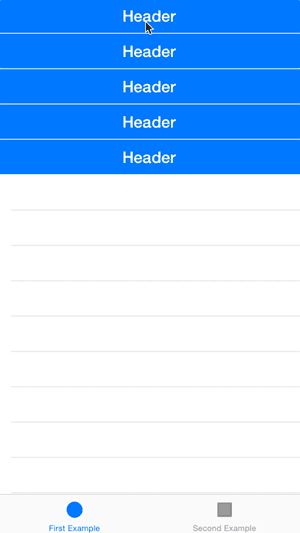我有一个自定义单元格的表格视图和每个单元格中的一些按钮。单击单元格内的任何按钮将显示该单元格下方的另一个自定义视图。下一步单击同一按钮将折叠视图,并且所有单元格都需要相同的视图.我尝试在按钮单击时使用 insertrow 方法,但徒劳无功。我如何仅使用表视图代表来做到这一点。
这是我尝试过的:
- (UITableViewCell *)tableView:(UITableView *)tableView cellForRowAtIndexPath:(NSIndexPath *)indexPath
{
static NSString *simpleTableIdentifier = @"CustomCell_For_Dashboard";
CustomCellFor_Dashboard *customCell = (CustomCellFor_Dashboard *)[tableView dequeueReusableCellWithIdentifier:simpleTableIdentifier];
if (customCell == nil)
{
NSArray *nib = [[NSBundle mainBundle] loadNibNamed:@"CustomCellFor_Dashboard" owner:self options:nil];
customCell = [nib objectAtIndex:0];
}
[customCell.howyoulfeelBtn addTarget:self action:@selector(buttonclicked:) forControlEvents:UIControlEventTouchUpInside];
customCell.nameLabel.text = @"test";
customCell.imgView.image = [UIImage imageNamed:@"Default.png"];
// customCell.prepTimeLabel.text = [prepTime objectAtIndex:indexPath.row];
return customCell;
}
-(void)buttonclicked:(id)sender{
NSIndexPath *indexPath = [myTable indexPathForCell:sender];
[myTable beginUpdates];
NSIndexPath *insertPath = [NSIndexPath indexPathForRow:indexPath.row inSection:indexPath.section];
[myTable insertRowsAtIndexPaths:[NSArray arrayWithObject:insertPath] withRowAnimation:UITableViewRowAnimationTop];
}
谁能帮我?
